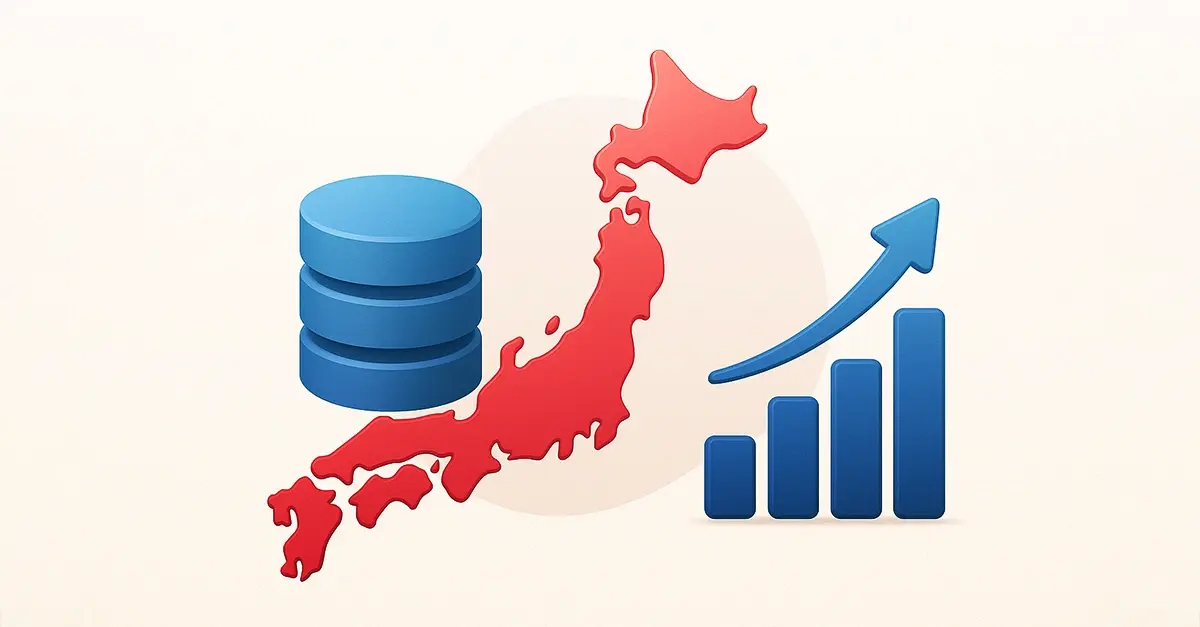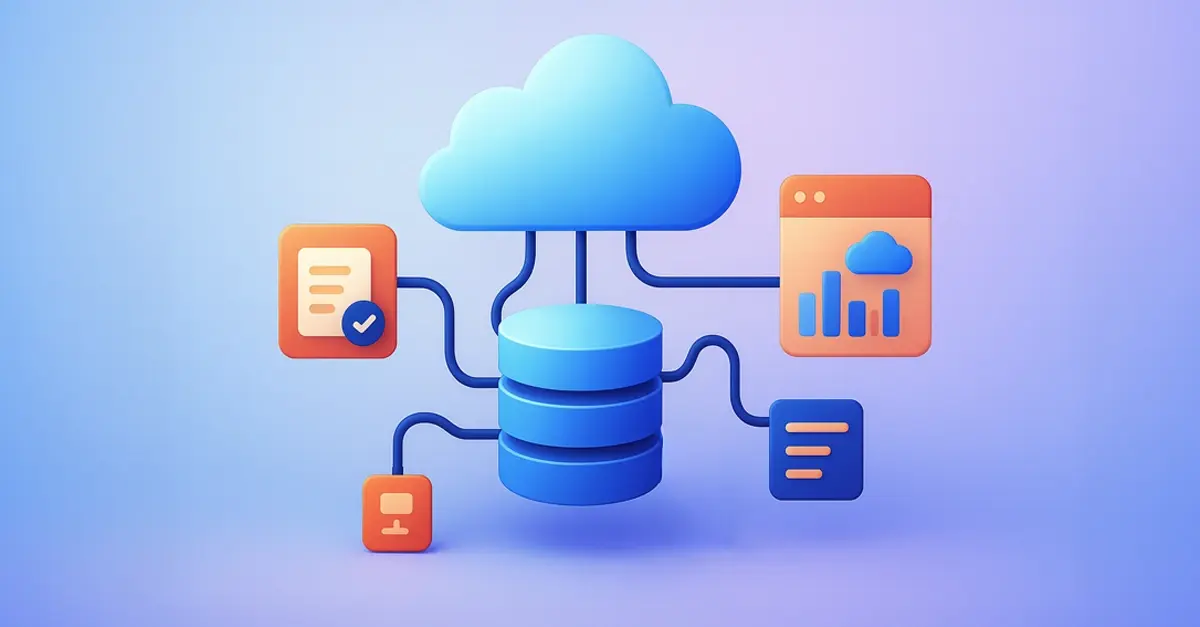Technographic vs Firmographic Data
B2B teams today are under pressure to find and engage the right accounts faster. But targeting only works when it’s based on data that reflects what truly matters—not just who a company is, but how it operates. That’s where firmographic and technographic data come in.Firmographics define a company’s external profile - revenue, headcount, location, industry, legal structure. It’s the foundational layer of most CRM systems, territory plans, and go-to-market (GTM) strategies. Firmographic data isn’t used solely for lead generation; it also supports market segmentation, TAM (Total Addressable Market) analysis, territory design, investor research, and strategic planning.
Technographics, by contrast, reveal a company’s internal infrastructure. They show what tools a business uses to operate - its CRM, cloud provider, CMS, analytics platforms, and more. For sales and marketing teams, that’s the difference between guessing and knowing: whether a target account uses a competing tool, runs a compatible system, or is overdue for an upgrade.
When used together, these B2B data types can transform lead qualification, segmentation, and outreach. But they’re not interchangeable—and the right mix depends on your goals, systems, and stage in the buyer journey.
In this article, we’ll break down:
- What each data type includes (and what it doesn’t)
- When and why to use one, the other, or both
- Real-world examples by role: Marketing, Sales, RevOps
- What to look for in high-quality datasets
- How combining both drives better GTM outcomes
Let’s start with the basics - then work toward a smarter, more strategic approach to data-driven targeting.
Firmographic Data: The Foundation for Segmentation
Firmographic data is the backbone of most B2B segmentation strategies. It describes the structural and organizational characteristics of a company - attributes that help define whether an account fits your ideal customer profile (ICP) on a surface level.Common Firmographic Attributes:
- Company name and legal entity
- Industry and sub-industry classification (e.g., NACE, NAICS, SIC)
- Revenue range or estimated turnover
- Employee headcount
- Headquarters and geographic locations
- Company status (active, closed)
- Corporate linkage (parent-subsidiary relationships)
This data is essential for building account lists, structuring territories, routing leads, and creating ABM segments. For example, a B2B SaaS company targeting 100–500 person firms in the logistics industry across Western Europe would rely on firmographic data to identify matching accounts.
Where Firmographics Excel:
ICP definition: Firmographics help marketing and sales align on who they’re targeting.
Territory planning: Geographic and revenue data support smart coverage models.
Baseline segmentation: Industry and size filters are essential for broad campaigns and list-building.
Where Firmographics Fall Short:
While firmographics can confirm basic fit, they rarely indicate buying intent or solution readiness. Two companies may have similar revenue and headcount but completely different tech stacks, digital maturity, or operational challenges.
That’s where technographics come in - filling the context gap.
If firmographics answer who the company is, technographics answer how it functions. And without that second layer, GTM teams risk targeting lookalike accounts that don’t convert, aren’t compatible, or require different messaging altogether.
Next, we’ll dive into what technographic data covers - and why it’s often the differentiator between broad targeting and high-performance GTM strategy.
Technographic Data: The Operational Context
Technographic data captures the technologies a company uses to operate—its software, infrastructure, and digital tools. This includes everything from CRM platforms and cloud services to security systems, collaboration apps, and content management systems. If firmographics tell you who a company is, technographics tell you how it runs.Core Technographic Attributes:
- CRM platform (e.g., Salesforce, HubSpot, Zoho)
- Cloud infrastructure (e.g., AWS, Azure, Google Cloud)
- Marketing automation (e.g., Marketo, Pardot)
- CMS (e.g., WordPress, Drupal, Shopify)
- Payment method providers (PayPal, Stripe)
- Security stack (e.g., Okta, Proofpoint)
- Analytics tools (e.g., Google Analytics, Tableau)
More advanced datasets may also include:
- Deployment model (on-prem vs. cloud)
- Usage maturity (new install vs long-time user)
- Estimated license spend
- Historical install/uninstall activity
For GTM teams, technographics are often what separates a cold lead from a high-intent, high-fit account.
They provide the context needed to:
- Displace competitors (e.g., target accounts using legacy or rival platforms)
- Tailor outreach based on a company’s stack or integration needs
- Exclude incompatible accounts (e.g., if your solution only supports cloud-native environments)
Why Technographics Matter:
- Help prioritize leads based on actual operating conditions
- Improve message relevance and personalization
- Reveal whitespace and cross-sell opportunities
While firmographics help define the top of the funnel, technographics move prospects through it with greater efficiency. In the next section, we’ll look at how the two data types compare side by side - and why combining them is where real GTM precision begins.
Firmographics vs Technographics: Side-by-Side Breakdown
|
Attribute: |
Firmographic Data: |
Technographic Data: |
|
Focus |
Company identity and structure |
Operational technology stack |
|
Examples |
Revenue, employee count, |
CRM platform, CMS, cloud provider, |
|
Purpose |
Define ICP, route leads, |
Score fit, personalize outreach, |
|
Use Cases |
ABM segmentation, lead routing, |
Outreach prioritization, |
|
Data Source Type |
Business registries, corporate filings, |
Software catalogs, verified platform usage, |
How They Complement Each Other
Used on their own, firmographics help ensure you’re targeting the right type of company. But without technographics, you’re often blind to operational fit - whether the prospect uses technology that integrates with your solution, competes with it, or creates a dependency you can solve.Example 1: a RevOps team might use firmographics to build a list of 500–1,000-person companies in financial services, then layer in technographics to find only those still using on-prem CRMs.
Example 2: a marketing team running an ABM program could segment targets by region and revenue, then tailor messaging based on each account’s CMS or cloud provider.
When these two datasets are unified, they unlock true GTM precision:
- Better lead scoring
- More targeted messaging
- Shorter sales cycles
- Higher conversion rates
In the next section, we’ll walk through specific scenarios to help you decide when to use one, the other, or both—based on your role, goals, and funnel stage.
When to Use One, the Other, or Both
Firmographic and technographic data aren’t competing tools - they’re complementary. The key is knowing when to rely on each, and how to combine them for maximum impact. Your decision should be based on your team’s goals, the stage of the funnel, and the level of targeting required.
When to Use Firmographic Data Alone
- Early-stage segmentation: Defining a broad total addressable market (TAM) by size, region, or industry
- Territory planning: Structuring account assignments for sales teams
- CRM normalization: Cleaning and standardizing account records for lead routing
Firmographics are best for building the foundation - establishing coverage and fit at a high level. If you’re trying to answer “Is this account relevant to us?” firmographics usually provide the first filter.
When to Use Technographic Data Alone
- Competitive displacement: Identifying accounts using a tool you replace
- Outreach personalization: Crafting email or ad messaging around known platform usage
- Product fit scoring: Targeting based on integration readiness or system compatibility
Technographics are ideal when the campaign or GTM motion depends on operational details—what’s installed, what’s outdated, and where your product fits in.
When to combine both
- Account-Based Marketing (ABM): Define target accounts using firmographics, then prioritize and personalize using technographics
- CRM lead scoring: Use firmographics to define ICP, then boost scores for accounts using specific technologies
- Sales prioritization: Focus reps on high-fit accounts that meet both structural and operational criteria
Examples by Role:
- Marketing Lead: Uses firmographics to define ICP, technographics to personalize nurture streams
- RevOps Manager: Cleans CRM using firmographics, enriches high-potential accounts with technographics for routing
- Account Executive: Prioritizes outbound lists based on tech stack fit, not just industry or size
Firmographics tell you if the account could be a good fit. Technographics tell you if it’s a good fit right now. When layered together, they reduce guesswork, improve conversion rates, and help teams focus their time where it counts.
How They Work Together in a Smart GTM Stack
Firmographic and technographic data deliver the greatest value when they’re used in tandem—layered strategically into your CRM, marketing automation system, and sales workflows. This combined approach powers smarter segmentation, more relevant messaging, and cleaner operations across the entire go-to-market stack.
A Unified Data Strategy in Action
Let’s walk through how firmographic and technographic data work together inside a real GTM flow:
- Start with firmographics to define the ICP: mid-market financial services firms in the UK with 200–1,000 employees
- Narrow further with technographics: companies using a legacy on-prem CMS or marketing platform
2) Lead Scoring & Routing (RevOps)
- Apply baseline scores for firmographic fit (size, industry, location)
- Add multipliers for technographic match: e.g., known use of a platform your product integrates with
- Route high-fit leads directly to SDRs; deprioritize low-fit or incompatible accounts
3) Personalized Outreach (Sales)
- Use firmographics for relevance in initial messaging (e.g., “We work with UK-based fintechs like yours…”)
- Use technographics to personalize value (e.g., “Our platform integrates natively with your CMS to streamline…”)
- Increase reply rates and shorten time-to-first meeting
4) ABM Execution (Marketing + Sales)
- Build firmographic-based tiers (e.g., Tier 1 = 500+ employees)
- Layer in technographics to trigger personalized ads, email sequences, and follow-up plays
Why Integration Matters
To make this work at scale, both firmographic and technographic data must be:
- Structured and machine-readable
- Continuously refreshed
- Integrated into the tools your teams already use
InfobelPRO supports this unified model with verified, structured datasets - delivered via flat file or API - and designed to plug directly into modern GTM workflows.
What to Look for in High-Quality Datasets
Choosing the right technographic and firmographic data providers is just as important as choosing the right data type. Whether you're sourcing firmographic, technographic, or both, the quality of the dataset will directly impact your campaign performance, lead scoring accuracy, and overall GTM efficiency.
Here’s what to look for when evaluating firmographic and technographic data sources:
1. Accuracy and Verification
How is the data collected and validated?
Are firmographics sourced from official business registries?
Are technographics based on structured signals—not scraped or inferred from browser plugins?
Accurate data reduces false positives, improves segmentation, and prevents wasted sales activity.
2. Coverage and Depth
Does the provider cover your target regions, industries, and company sizes?
For technographics: how many technologies are tracked? Are deployment models, install history, or usage signals included?
Depth matters as much as breadth—especially when it comes to ABM and lead scoring.
3. Refresh Rate and Update Cadence
How frequently is the data updated?
Can it reflect changes like company closures, tech stack shifts, or mergers?
Outdated data leads to misrouted leads and ineffective outreach. Choose datasets with scheduled refresh cycles or live API syncs.
4. Structure and Integration Readiness
Is the data delivered in a clean, flat structure that maps to your CRM?
Are attributes clearly defined and consistent across records?
Firmographic and technographic data should enhance your GTM systems—not create extra cleanup work.
5. Compliance and Transparency
Is the provider GDPR-compliant?
Can each record be traced back to a verifiable, legitimate source?
This is critical for both marketing compliance and enterprise-grade auditability.
InfobelPRO meets these benchmarks with verified, structured firmographic and technographic data - available via flat file or API, and built to integrate into real GTM workflows without guesswork or cleanup.
Conclusions: Technographics as a GTM Advantage
Firmographic and technographic data each offer powerful advantages. On their own, they help you define target accounts, improve segmentation, and guide outreach. But together, they form a unified intelligence layer that enables smarter decisions at every stage of the go-to-market process.
Firmographics provide the baseline - who a company is, where they operate, and how they’re structured. Technographics deliver the context, so how that company runs, which tools it uses, and whether it aligns with your product or offer. When layered together, these go-to-market data types help GTM teams move from generic campaigns to precise, personalized engagement that drives real results.
Whether you're refining lead scoring, personalizing outbound outreach, or structuring an account-based strategy, better targeting starts with better data. But not all data sources are equal. Clean, structured, and continuously refreshed datasets make the difference between targeting with confidence - or wasting time on misaligned accounts.
InfobelPRO delivers verified firmographic and technographic data built for go-to-market teams—not scraped, stitched, or inferred. With structured delivery, global coverage, and deep European strength, it’s data that’s ready to work inside your CRM, your GTM platform, or your enrichment pipeline.
Looking to combine firmographic and technographic intelligence in one clean source?
Explore how InfobelPRO helps teams segment smarter, route faster, and prioritize with clarity. Schedule a free data audit HERE.






Comments